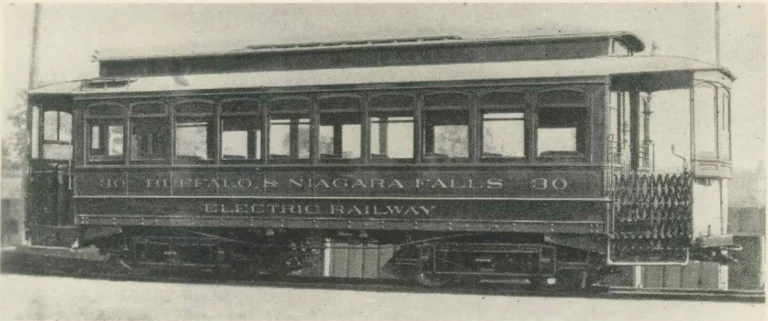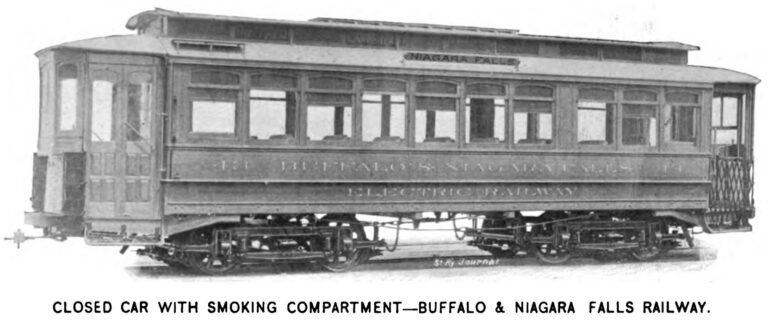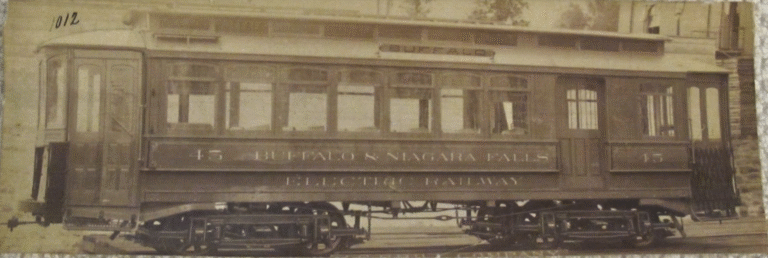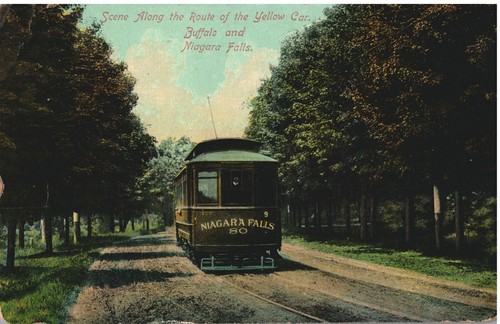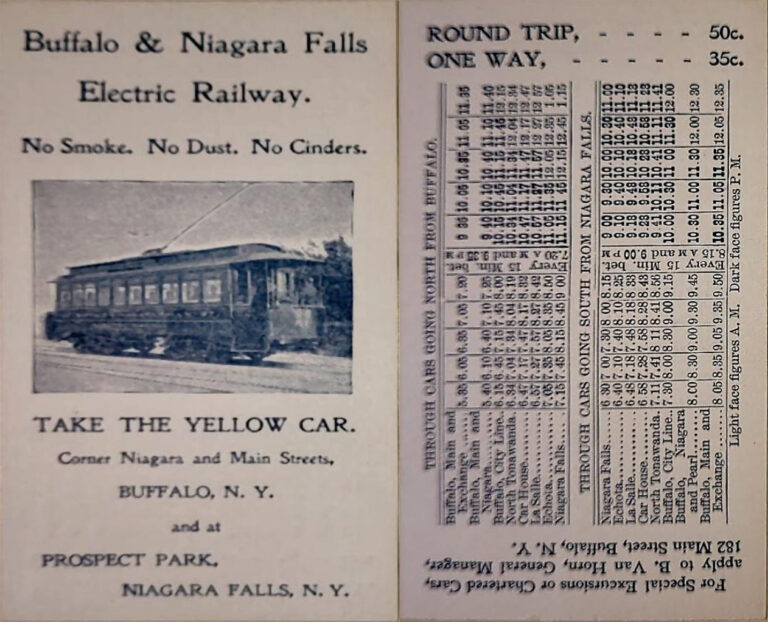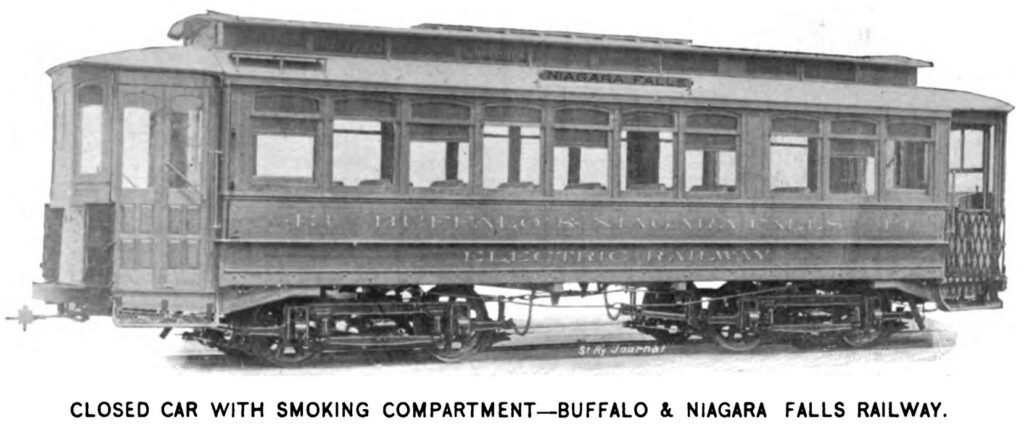
The Buffalo and Niagara Falls Electric Railway was an electric railway operating between Buffalo and Niagara Falls, NY between 1893 and 1902. It was one of a number of electric railways built to take advantage of the cheap electric power from Niagara Falls.
History
The Buffalo and Niagara Falls Electric Railway was incorporated on March 17, 1893. An 1893 report of the NYS Railroad Commissioners stated that the company was organized that year and had constructed 5 miles of track. A report the following year listed it among a table of “Roads Not Built, or But Partially Built.”
On May 28, 1895 the company merged with the Buffalo and Tonawanda Electric Railway and the new company continued operating under the Buffalo and Niagara Falls Electric Railway name.
An 1897 book on Niagara County states that:
The Buffalo and Niagara Falls Electric Railway Company was consolidated May 24, 1895; construction on the line began May 10 of that year, and the road was completed September 22 of that year. The capital is $1,250,000, and thirty miles of track are operated. The cost of the road and equipment is $2,102,169. The cars are run by electric power supplied by the Niagara Falls Power Company. W. Caryl Ely, president; Burt Van Horn, secretary and treasurer ; C. K. Marshall, superintendent
On February 19, 1902 the Buffalo and Niagara Falls Electric Railway merged with the Buffalo Railway, the Buffalo, Tonawanda and Niagara Falls Electric Railroad, the Niagara Falls and Suspension Bridge Railway, the Buffalo and Lockport Railway, and the Lockport and Olcott Railway to form the International Railway Company.
Operations
The 1896 “Paul’s Dictionary of Buffalo, Niagara Falls, Tonawanda and Vicinity” described the route of the railway:
Cars of the Buffalo and Niagara Falls Electric Railway leave the Terrace (Main and Exchange Streets) every 15 minutes during the day, running on Niagara Street to Connecticut, to Plymouth Avenue, to Hampshire, to Grant, to City Line. From there through Tonawanda, North Tonawanda, Gratwick, LaSalle and Echota. Fare, 35 cents. Round Trip, 50 cents.
An 1895 report of the NYS Railroad Commissioners noted that
The Board called attention in its last annual report to the necessity for some device by which the speed of trolley cars could be mechanically regulated…A controlling device has also been perfected, and is now in successful operation on the cars of the Buffalo and Niagara Falls Electric street surface road. The cars of this road are equipped with four twenty-five-horse-power motors, and the speed controller can be adjusted by the motorman to positively limit the maximum speed the car can attain.
An 1897 report of the NYS Railroad Commissioners noted that the Buffalo and Niagara Falls Electric Railway had the right-of-way over three miles of track owned by the Niagara Falls and Suspension Bridge Electric Railway on Buffalo Avenue, Erie Avenue and Falls Street in Niagara Falls. The B&NF paid the NF&SB three cents for each passenger carried over that section.
The same report noted that the company ran cars over six miles of tracks owed by the Buffalo Railway Company within the city limits of Buffalo but received no income from trips within the city limits of Buffalo.
A 1900 report of the NYS Railroad Commissioners approved the Buffalo, Tonawanda and Niagara Falls Electric Railroad to abandon a portion of its line in Tonawanda and North Tonawanda because they had negotiated the right to run over the tracks of the Buffalo and Niagara Falls Electric Railway, the Buffalo and Lockport Railway, and the Crosstown Street Railway Company of Buffalo.
Stations
Buffalo – Main and Exchange Streets * Buffalo – Niagara and Pearl Streets * Buffalo City Line * North Tonawanda * Car House * La Salle * Echota * Niagara Falls
Clippings
Photographs
Maps
Timetables
Learn More
- Brighton, Robert. “Secrets of Buffalo’s Gilded Age: A Tale of Two Trolleys” 30 September 2024. Buffalo Rising.
- Peter Paul Book Company, “Paul’s Dictionary of Buffalo, Niagara Falls, Tonawanda and Vicinity” 1896. Found on Archive.org.
- Wikipedia. “International Railway (New York–Ontario)“
